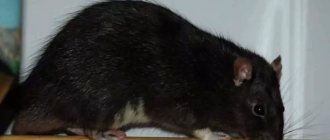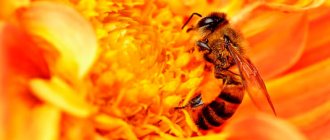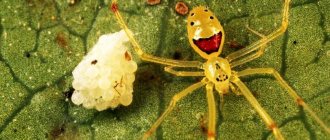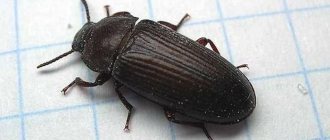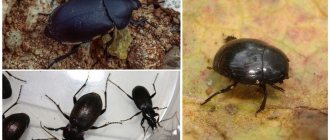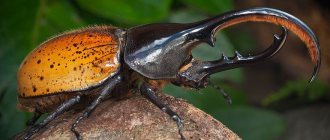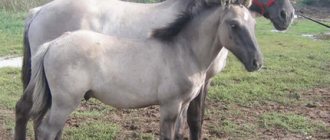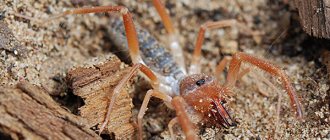general characteristics
Mountain goats are artiodactyl mammals from the bovid family, familiar to everyone at least from pictures. They live, as the name suggests, mainly in the mountains of Eurasia and Africa. These are the oldest representatives of the fauna of the northern hemisphere.
Mountain goats are distant relatives of mountain sheep, snow goats, chamois and even gorals. They can live at an altitude of 5 thousand meters above sea level. There are about ten species of these graceful animals. They are united into one genus by common morphological characteristics and a love for high mountain areas. The habitats of different species of wild goats rarely overlap. They chose this unusual habitat to escape predators.
The animals are hardy, agile, undemanding when it comes to food, and are able to survive on sparse vegetation. They feed on grass, branches of bushes and tree bark, mosses and lichens. These ruminants love salt and are ready to climb the steepest cliff for it, which often surprises tourists and photographers.
They owe their climbing abilities to their compact body structure, strong legs, narrow, tenacious and cloven hard hooves with soft padded soles that can stick to the surface of any stone. Mountain goats have excellent coordination and a developed sense of balance. These animals, like butterflies, jump and flutter around the mountains, and if they cannot stay on one ledge, they quickly jump to another. They have very strong trained leg muscles, and they begin to jump on rocks from infancy.
Mystery of nature
Many people wonder how such large mammals manage to stay on steep rocks? It's all about strong, small hooves. The hard hoof horn allows you to stand in a very small area without experiencing discomfort.
A tiny ledge on the rock will be enough for the animals not only to maintain their balance, but also to be able to run along steep slopes. The hooves are equipped with ultra-sensitive pads that provide additional traction on rocky surfaces. In addition to their hooves, goats are helped to stay on steep rocks by:
- exceptional sense of balance;
- filigree coordination of movements;
- acute vision, allowing you to notice even small stone protrusions.
If, having stood on a stone, the animal realizes that it is too small and it will not be possible to stay on it, it instantly finds the next ledge, to which it quickly jumps.
What does a mountain goat look like?
A distinctive feature of these animals is their amazingly beautiful horns, which grow throughout their lives and reach a length of more than one meter (in males). They are hollow inside and have transverse thickenings on the outside. The horns can be arched, curved back or to the sides, twisted into a spiral or screw. Goats never throw this attribute off their heads. Females also have horns, but they are short and dagger-like.
Mountain goats, as a rule, have a medium-sized dense body, a strong neck, a small head with a convex forehead, and strong, medium-length limbs. The height at the withers is 50-95 cm, and the length of the body is 1.2-1.8 m. The ears are erect, the tail is short. Goats have a goatee on their chin. The body of the animals is covered with short, thick and coarse hair of brownish, sandy, gray or yellowish color. Goats have an excellent sense of smell and vision (300 degree vision), and a well-developed brain.
See also
Treatment of lice in goats with drugs and folk remedies at homeRead
These animals have been familiar to people for many millennia. The mountain bezoar goat is the ancestor of the domestic goat, the one that is bred for milk, meat and wool. These animals were previously sacrificed, and myths and legends were written about them. The mythical goat Amalthea, according to the beliefs of the Greeks, even fed the baby Zeus with her milk.
Domestic goats are milked after the first lambing. Wild animals are not milked. All milk is fed to the cubs. Females have an udder with two teats. Wild goats weigh approximately 45-90 kg. Males are larger, their body weight is 50-125 kilograms. Females give birth to kids weighing 3-4 kg.
Breed varieties
Mountain goats are divided into three groups. The classification is based on the structure of the horns. In total there are 8-10 species of these beautiful animals. Mountain goat groups:
- Capricorns. Representatives (goats): Iberian, Nubian, Siberian, Ethiopian and Alpine (ibex). These are animals with wide (near the head) and gradually tapering arched large horns. Length - up to one meter (in males). Numerous transverse ridges are visible on the upper surface. The horns are curved back and slightly diverge to the sides. Animals of this group live in mountainous, steppe and hilly areas.
- Tours. Representatives: Western Caucasian, Eastern Caucasian, Severtsova. Turs have long horns that grow back or to the sides. They have an arcuate or semi-spiral shape. The surface of the horns is slightly ribbed. Turs live mainly in mountainous areas (in the Caucasus).
- Goats. Representatives: point-horned goat, domestic goat (more than 300 breeds). Unlike domestic animals, horned wild goats live in Asia, in the mountains. They have long, twisted horns that resemble a corkscrew. Female horned animals also have twisted horns, but small.
Keeping and caring for Alpine goats
The milk yield of the Alpine breed is rather large, the animals show high productivity; for the entire 9 months of lactation, the average milk yield is 700-900 kg. Such a goat on the farm will produce milk for 9-12 months a year. And the average annual milk yield will be up to one and a half thousand liters of healthy and tasty milk with a fat content of 3%. Immediately after milking, it is necessary to filter and cool the milk; the optimal temperature for storage is 4.4 degrees. High temperatures lead to abundant growth of bacteria that spoil the milk. In the Alps, the breed was bred precisely for this value. No less healthy goat cheese, feta cheese, is also made from milk.
This breed is popular among industrial dairy farms due to its high level of productivity, adaptability to machine milking, long lactation period, and docile disposition. The main disadvantage of Alpine goats is the low fat content in milk (3.2-3.5%) and protein (2.3%). At the same time, the level of milk production and fat content remains unchanged for most of the lactation; in other breeds there is a decrease in productivity and an increase in fat content towards the end of the milking period.
To maintain a good level of milk production, the owner must provide the animals with decent feeding and maintenance. The breed reacts extremely negatively to environmental changes - daily milk yield sharply decreases, which often does not recover. It is necessary to achieve a constant microclimate in the room and uniformity of diets. The following four factors are of greatest importance:
- good ventilation;
- dryness of the room;
- clean water and food;
- minimum level of manual labor.
Although goats were bred for grazing in the lush meadows of the French Alps, they are well suited for industrial farming. Goats are housed in groups in rooms with deep bedding, which is changed every six months, and new straw is added daily. Milking is carried out in the milking parlors of the "Carousel" system. Modern dairy goat farms are operated by a small number of staff. France has a large number of family farms, where a herd of several hundred dairy animals is managed by members of the same family.
In our country, the Alpine breed has not yet received proper distribution, although the first individuals appeared more than half a century ago. There are no breeding farms engaged in breeding this breed in our country, therefore, to purchase purebred young animals, you should contact foreign goat breeders. But alpine animals have a great future, as traditional animal husbandry is being actively revived.
Lifestyle
Mountain goats usually live in mountainous areas. Representatives of this genus of fauna avoid flat and flat areas. They like to gallop along mountain slopes, rocks and cliffs. These herd animals do not leave their native places even in winter. In the summer they simply climb as high as possible into the mountains, and in the winter they have to descend to the foothills. Males and females live separately from each other, in small groups. Bucks join female goats only during the mating period. Kids live with their mothers for up to a year. In winter, herds of animals become larger. In spring, goats disperse in groups of 6-7 individuals.
History of appearance
The beginning of hunting these animals dates back to ancient times. The place where people first took these animals into their homes is considered to be the north of Iran. The horns of a large male were coveted trophies among tribal peoples in different parts of the world. Finding and trapping such an animal was not an easy task.
From these animals, people learned to peel off the skins from which they made shoes and clothes, and used them as material for homes. Mountain goat meat was especially prized and was considered a delicacy by ancient people. People also used fat in food. After extracting so many useful products from goats, ancient man domesticated wild goats along with dogs. That is why there are now so many different breeds of this magnificent animal in the world, for example, meat, dairy, intended for fluff, and others.
In the Middle Ages, their skins were used to make containers for food and wine. Wild goat milk is still valued for its nutritional properties.
In the modern world, mountain goats can be found high in mountain cliffs, or in large zoos. There they easily take root and reproduce brilliantly.
Since ancient times, it was believed that goats are symbols of dark, evil or devilish power. However, they are actually very intelligent creatures and are highly trainable. One of the constellations is named after Capricorn, named after these representatives of the animal kingdom. Their outlines can be found in the drawings of many peoples inhabiting Eurasia.
What do they eat?
Mountain goats feed on everything they find in the mountains: grasses, branches of bushes, mosses, lichens. They taste everything they see and then decide whether they will eat it or not. Wild animals eat bark, leaves, fruits. If desired, they can climb a tree. They love salt very much, for which they even climb the walls of a concrete dam. Animals graze early in the morning or late in the evening. At lunchtime they rest or hide in the shade from the sultry sun. In places where predators can lie in wait for them, they go out to pasture only at night, and during the day they hide in rocks.
Features of behavior
Mountain goats spend most of their lives in the same area within their native herd. From childhood they get used to the mountains and to moving through mountainous and steep terrain. Animals easily jump over cliffs and balance perfectly on a vertical surface. They try to stay away from people and predators.
Expert opinion
Zarechny Maxim Valerievich
Agronomist with 12 years of experience. Our best country expert.
Ask a Question
True, because of their curiosity, they sometimes watch from afar, for example, tourists and skiers.
Mountain goats run fast, jump high, can climb any steep cliff, and jump over a precipice. They are very careful, intelligent and observant, and in case of danger they show courage. The herd usually has a guard goat that watches the area. He warns his relatives about the danger by bleating; if necessary, the animals engage in battle with the enemy. True, most often wild goats quickly run away and hide in hard-to-reach rocks. Only males fight among themselves, and then only during the mating season.
See also
Can a pregnant goat go beyond term and for how long, signs and what to doRead
Dangers and Enemies
Mountain goats live their entire lives in hard-to-reach mountain areas, escaping from predators. They are hunted by bears and wolves, lynxes and leopards, panthers, tigers, and leopards. Small goats can become prey for golden eagles, eagles, kites, and hawks. Danger lurks everywhere for these wild mountain animals. In winter, they die due to avalanches, severe frost and cold winds. In summer, humans hunt animals. True, many rare species (alpine, markings, Severtsova) are protected by law, that is, hunting them is prohibited.
Interesting facts about the Alpine ibex
- The horns of a male Alpine mountain goat reach about 1 m in length.
- This species, like other goats, is characterized by a special, pronounced “goat smell”. Animals may spray themselves with urine.
- In Medieval times, people used all parts of the body, as well as the blood, fur and feces of ibex, as medicinal products. Because of this, the animals were actively hunted and the population was almost completely exterminated until the beginning of the 19th century, after which the species was taken under protection and restored.
Reproduction and offspring
At the end of autumn, mountain goats begin the mating period. Males find females and engage in fierce fights among themselves. True, mating fights are always conducted in compliance with certain rules. Males strike only with their horns (the upper surface); they do not butt heads like wild rams. Their beautiful headdresses often suffer during battles.
Males never hit unprotected parts of the body with their horns and drive the enemy away only a short distance. The winner of the fight gets the entire herd of females. During the mating season, males emit a pungent odor and become more aggressive than usual.
Pregnancy in goats lasts 5-6 months. In the spring they give birth to 1-4 young. From the first minutes of life, goats can stand on their legs and can suck milk from the udder. The cubs are very playful and active, jumping and frolicking a lot. The young live with their mother for about a year, and then the females remain, and the young males form their own herd. Adult goats jump along steep cliffs in splendid isolation. Animals live on average 10-20 years.
